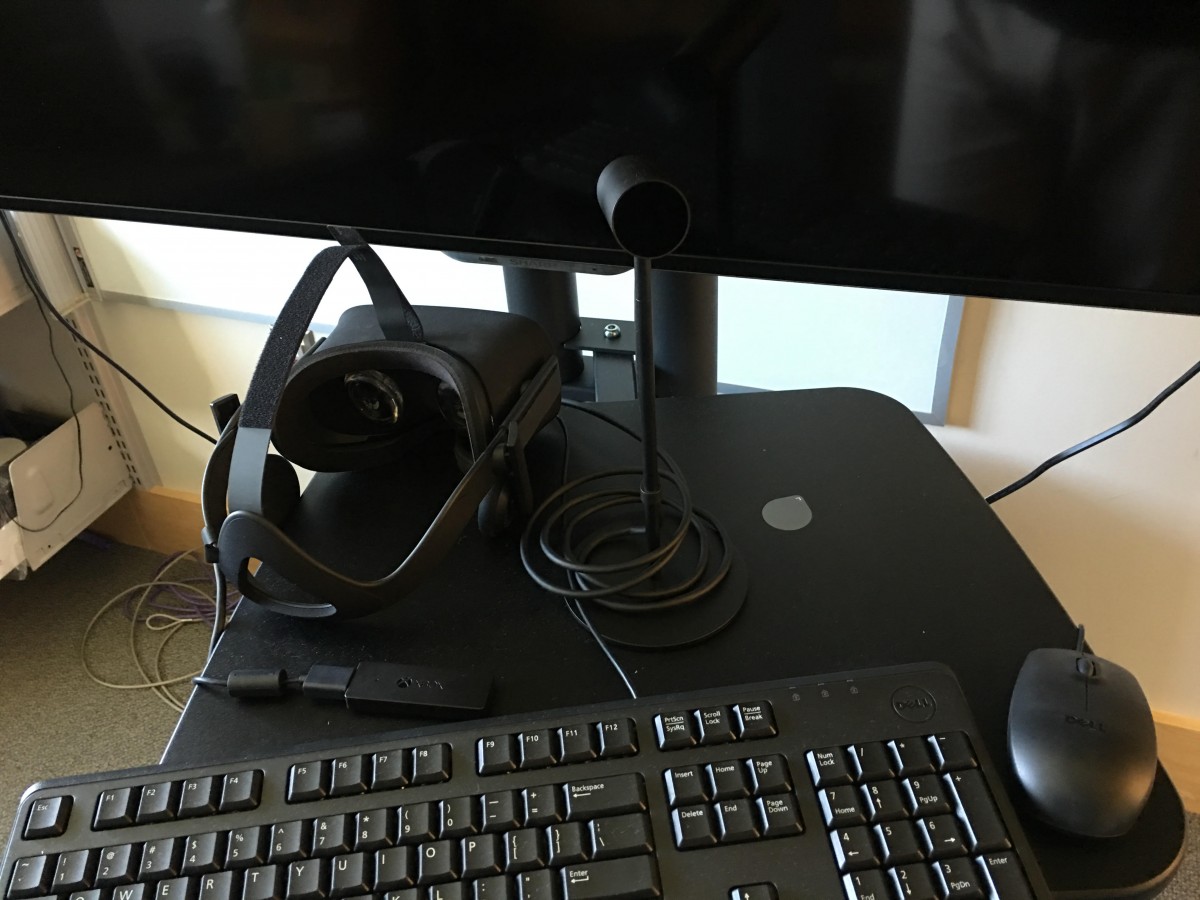The Oculus is set up and ready to go. To prepare for this momentous occasion I attended a pre- NMC Summer Conference workshop on Virtual Reality and the Future of Learning. Maya Georgiva, from New York University, and Emory Criag, from College of New Rochelle, presented a thorough and engaging overview of the new realities that will influence the academic cyberinfrastructure. The workshop and the conference prompted a lot of thoughts and questions. For instance…
What is the difference between augmented reality, virtual reality, and mixed reality?
From Wikipedia “Augmented reality (AR) is a live direct or indirect view of a physical, real-world environment whose elements are augmented (or supplemented) by computer-generated sensory input such as sound, video, graphics or GPS data.”
My interpretation is that this reality occurs when digital information has a connection with physical space. For instance, portal information is only available when a player moves to coordinates in a real location.
Another example is Pranav Mistry’s Sixth Sense, where are camera picks up information in physical space and projects related digital information.
From Wikipedia: “Virtual reality or virtual realities (VR), also known as immersive multimedia or computer-simulated reality, is a computer technology that replicates an environment, real or imagined, and simulates a user’s physical presence and environment to allow for user interaction. “
Immersive is the key word, the majority of the sensory information has been created, most often digitally. The participant is surrounded by the virtual world, they experience very little from the physical space. Star Trek’s Holodeck would be considered an advanced version of vr.
For now we will need devices like the Oculus, so that we can be saved from aliens by a bunny, or be eaten by a T-Rex.
From Wikipedia “Mixed reality (MR), sometimes referred to as hybrid reality,[1] is the merging of real and virtual worlds to produce new environments and visualizations where physical and digital objects co-exist and interact in real time.”
The top of the Wikipedia article suggests that MR should be merged with AR. Based on explanations or MR I could see it as a subset of AR, although I may rethink this if we start thinking about MR as including the features to bring you back and forth between AR and VR, much like Microsoft’s preview here.
https://www.youtube.com/watch?v=2MqGrF6JaOM
